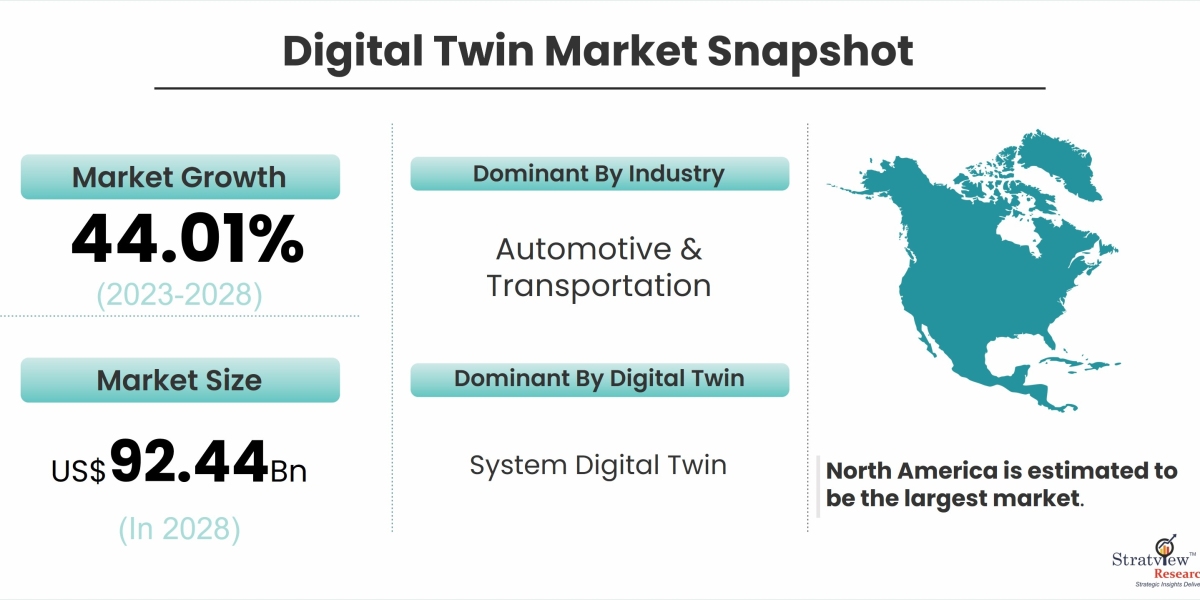According to Stratview Research, the digital twin market was estimated at USD 10.36 billion in 2022 and is expected to grow at a CAGR of 44.01% during 2023-2028 to reach USD 92.44 billion in 2028.
The world of manufacturing and design is undergoing a radical transformation, and at the heart of this change lies a technology that promises to redefine how products are conceived, produced, and maintained. Digital twin technology, often referred to as the backbone of Industry 4.0, is revolutionizing the manufacturing and design processes across various industries. In this article, we will explore the profound impact of digital twin technology and how it is reshaping the landscape of manufacturing and design.
The Concept of Digital Twins
At its core, a digital twin is a virtual representation of a physical object, process, or system. It is not merely a static 3D model but a dynamic and data-driven replica that mimics the real-world counterpart in real-time. The aim is to create a digital twin so precise that it behaves and reacts like its physical counterpart, providing insights and predictability.
Key Elements of Digital Twin Technology:
Data Integration: Digital twins are fed with real-time data from various sources, including sensors and IoT devices embedded in the physical entity. This continuous data flow ensures that the digital twin is always up to date and accurately mirrors the physical entity's behavior.
Real-Time Monitoring: The data streaming into digital twins allows for real-time monitoring and visualization. This immediate access to information empowers decision-makers with insights into the performance and behavior of the physical entity.
Simulation and Prediction: Digital twins are not limited to monitoring; they can also simulate the behavior of the physical counterpart and predict outcomes. This predictive capability is invaluable for optimizing processes and enhancing decision-making.
Applications in Manufacturing and Design
Digital twin technology is transforming the landscape of manufacturing and design across numerous industries:
Product Design and Development: In the realm of product design, digital twins are used in the early stages to simulate and optimize product performance. Engineers can identify issues and make improvements before physical prototypes are produced.
Manufacturing and Production: Within manufacturing, digital twins of production lines and machines offer real-time insights into their status. Manufacturers can monitor equipment health, predict maintenance needs, and optimize operations for enhanced productivity.
Predictive Maintenance: Digital twins are revolutionizing maintenance strategies by analyzing real-time data from equipment and machinery. This allows companies to schedule maintenance proactively, reducing downtime and costly repairs.
Supply Chain Optimization: Digital twins are invaluable for modeling and optimizing supply chain processes, enhancing inventory management, and reducing production lead times.
Quality Control: In quality control, digital twins are used to identify defects and anomalies in real-time, ensuring that only high-quality products reach the market.
The Future of Digital Twins in Manufacturing and Design
As digital twin technology continues to evolve, its impact on manufacturing and design will become even more profound. The integration of IoT, artificial intelligence, and advanced analytics will further empower digital twins to optimize operations, reduce costs, and drive innovation. Digital twins are set to redefine how products are conceptualized, produced, and maintained, all while making manufacturing and design processes more efficient and agile.
Conclusion
Digital twin technology is a transformative force that is ushering in a new era of manufacturing and design. With its capacity for real-time insights, predictive capabilities, and process optimization, digital twins are at the forefront of the manufacturing revolution. As the technology advances, we can anticipate even greater achievements in product design, manufacturing efficiency, and supply chain management. Digital twins are not only revolutionizing the manufacturing and design processes but also redefining how we envision and create products across diverse industries.









